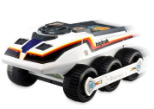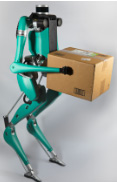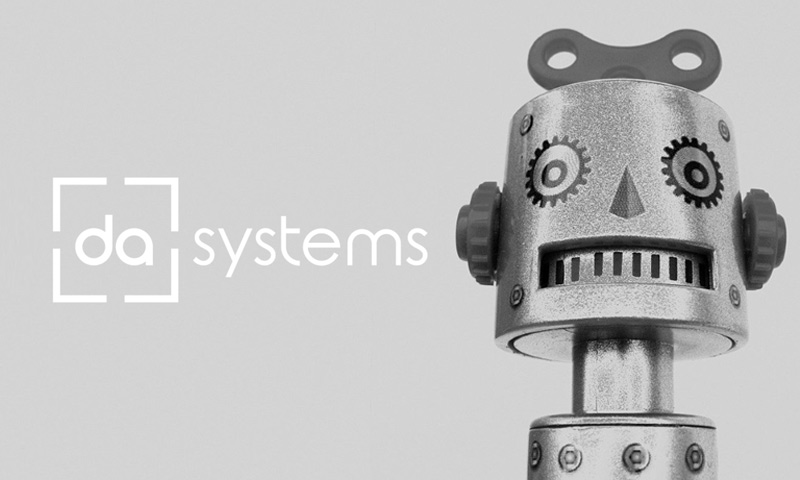Really… Robots?
Yes really!
In sameday courier, the physical movement of the package from collection to delivery accounts for around 70% of the cost of servicing that booking. This large percentage means that the collection and delivery activity is constantly under scrutiny and all over the world and teams of people are researching ways of increasing efficiency in order to reduce this percentage.
One of the areas being explored is: robotics; posing the question: can robots be utilised to do the activities currently being performed by humans (or ‘wetwear’!)? If so, what will this do to the cost of fulfilling the delivery?
Will they drive themselves around?
There is not much point in paying a human to drive a van to a location, then asking them to wait while a robot walks the package to the door, so yes, in a manner of speaking they will drive themselves. The most likely scenario is that a fully autonomous self-driving vehicle will drive the vehicle and the robot will be stored in a quick release dock amongst the parcels where it can charge and interface with the vehicle.
Sounds a bit science fiction, is this likely?
It is closer than you may think! Autonomous cars have been testing for years now and have racked up millions of miles of testing. That is, a vehicle which can drive itself to a destination whilst reading and safely reacting to the road conditions around it in real-time. It will not be many years before fully autonomous cars are commonplace on our roads.
It is not a giant engineering leap beyond this to fit a robot into a self-driving van.
Couldn’t we just have autonomous electric vehicles do the driving and keep humans for the first and last meter?
Yes, you could, but apart from safety, this doesn’t present an opportunity to reduce the cost as the human cost element is still there for the same amount of time as before.
OK so robots are chauffeur driven between stops, but what about stairs, the nemesis of the Daleks?
Although the Daleks have always struggled with stairs, industrial robot technology has come on massively in recent years and they can now pick up boxes and go up and down stairs with ease. Some can even do parkour!
The trials you see in the news are of robots walking up an open front garden path to a ground level house, being met by the recipient and then popping open a door so the recipient can remove their parcel while they stand there.
The real world of course is rarely as simple as this and there are many real work obstacles at the collection and delivery point which are there to test robots. These are often called ‘hard scenarios’ and are situations which a human negotiates on a daily basis without even thinking about:
- gated gardens
- communal residential entrances (with the numbers scratched off)
- communal office entrances with no receptionist/concierge
- entry phone handsets and intercoms
- lifts (out of order of course)
- No answer / leave safe (how does a robot decide what is safe or not?)
- Red routes / double yellow lines / no-where to park
- The sheer scale of the artificial intelligence required to negotiate every scenario is mind boggling and many years away from becoming a reality.

The best we could do presently is to have a robot which meets the customer kerbside. But how do we know if the customer is ready to meet us? What if they are elderly, vulnerable or disabled? What if it is raining or icy and your robot demands that an elderly person leaves their apartment and they slip and fall – who’s liable? That’s a big responsibility!
So we are years away from it being a reality, who is working on it today?
There are many companies working on robotics in logistics around the world today.
A well-known example is ‘Starship’ who have little robot containers on wheels that trundle around Milton Keynes within a few miles of a base, delivering pizza and small items of groceries. They look like a big ‘BigTrak’ (a toy from the 80’s), have a very limited range, can only carry a single delivery at a time, talk up pavement space and require the customer to come and meet the robot kerbside at both ends.
I read some comments recently on a food delivery driver forum about the fun to be had tipping these robots over whenever they saw one – so they are subject to vandalism/sabotage too.
Although it may not be a great or scalable solution, companies like Starship are pioneering the principals of robot deliveries.

A really promising looking robot is ‘Digit’, the two-legged biped robot from ‘Ability Robotics’. This is targeted specifically at delivery to home and is available to buy in early 2020. It looks like a human – which is good for acceptance by recipients. It can pick up and put down a package and unlike Starship can go beyond kerbside and actually go to a door.
There is a long way to go before Digit can tackle many of the hard scenarios described above but this is the most promising advance in robot delivery so far. If you haven’t already check out a video of it on YouTube!
Wow! How will it evolve? How are they going to tackle these real world ‘hard scenarios’?
Simple, by training the robots. Good practice is to take a small geographic area and concentrate really hard on solving the problems in it thoroughly before moving onto a new area and applying the learnings from the previous area.
The hardest part of the process is the final meter and taking the robot from the doorstep and proactively engaging with the customer to complete the process, rather than just standing there waiting to be met and interacted with or dropping the parcel and retreating. After all, proof of delivery (POD) is more than dropping a box outside a door and taking a photo.
Sounds expensive – how much is this setup going to cost and will it save me money?
A hard working sameday courier owner-driver can earn around 40k per year (pro-rated as they will be self-employed) and that provides your ‘all-in’ movement cost of the delivery (I.e. labour, vehicle and all running costs etc).
If you assume that a delivery robot and vehicle would last for say 3 years, then your robot and self-driving van, including buying/rental and all running costs (such as daily charging and regular maintenance, overnight storage of van and robot, insurance, security etc) will need to cost less than £120k over three years to make it cost effective. This is clearly not going to happen any time soon and I can imagine the real cost being 10x this if not more!
At the other end of the spectrum, things like the Starship robots are sub £10k to buy, but require infrastructure to run and are extremely niche in where and what they can handle.
Like all technologies, it will start expensive and gradually become more affordable. It will be 10 years before mainstream door to door deliveries by robot become viable and affordable alternatives to human labour.
Drones are cheaper – are they a better alternative?
No! They can be viable in certain niches, like extreme remote locations, but they won’t be doing mainstream deliveries any time soon.
They have so many drawbacks (weather, lack of landing zones in urban areas, safety issues, range and weight limits, lack of ability to interact etc) that they are not much more than a publicity exercise for companies. They are of course still contributing in some way towards the research of completing ‘unmanned deliveries’.
A recent piece of research showed that drones are 10x less efficient from a power perspective than electric vehicles – so there really isn’t much going in their favour. Drones are fun but not a viable delivery service alternative to humans (with the exception of for extreme remote locations).
What should I do?
Mainstream robot deliveries may not be happening immediately, but they will be happening.
Don’t buy robots and try to do it yourself, the computing horsepower needed to make robots effective is vast and best left to the men in white coats in Silicon Valley. But can you get involved in another way? You have years of experience on dealing with the first mile, the last mile and all the miles in between – can you share your knowledge with a robotics company? Can you assist with pilot schemes and provide feedback? This is what Ford are doing in London with Digit presently and are seeing some encouraging results.





